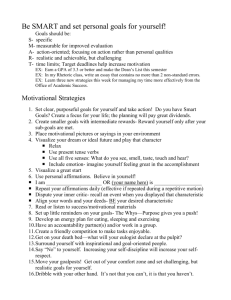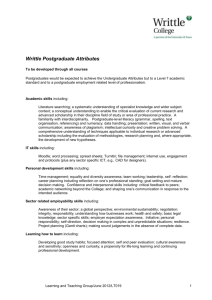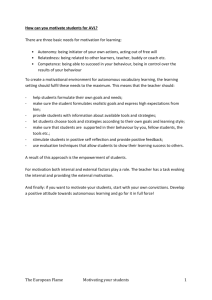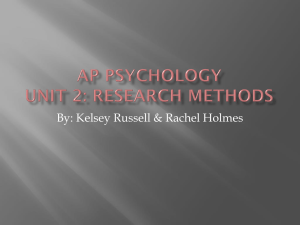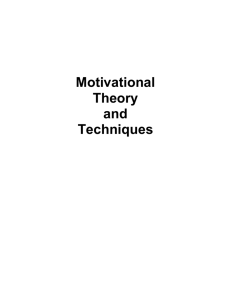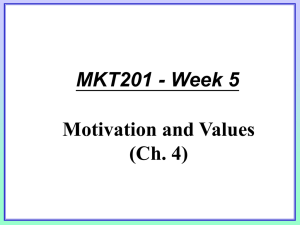Presentation - LOEX Annual Conference
advertisement
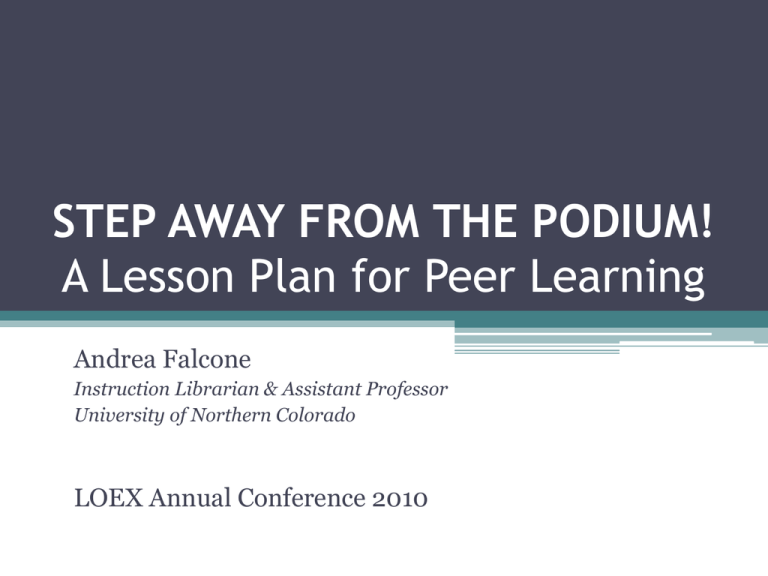
STEP AWAY FROM THE PODIUM! A Lesson Plan for Peer Learning Andrea Falcone Instruction Librarian & Assistant Professor University of Northern Colorado LOEX Annual Conference 2010 Outcomes: Given a one-shot instruction session focusing on the catalog and/or databases, you will be able to: (i) engage students actively and (ii) facilitate peer learning and teaching. Typical Session: Direct Instruction 1. Orientation ▫ Establish lesson objectives 2. Presentation ▫ ▫ ▫ Explain new concept or skill Provide visual representation Check for understanding 3. Guided Practice ▫ ▫ ▫ Practice semi-independently Circulate, monitor practice Provide feedback (Hurumi, 2009, p. 52) Collaborative (Peer) Learning: …“holds students responsible for contributing to the learning of the entire group, while they also take responsibility for their own individual learning” (Jacobson & Xu, 2004, p. 67) … “they will reassure each other while they help each other figure out the steps” (Keyser, 2000, p. 40) …“teams achieve at higher levels of thought and retain information longer than students who work quietly as individuals” (Gokhale, 1995, p. 22) Why is this appealing? To Students: • Peer-to-peer (learning and teaching) • Hands-on • Low-risk • Exploratory Why is this appealing? To Librarians: • Teaching moments • Reduces burn-out • Amount of content covered • Exposed to student processes, language, and obstacles Students: have too many distractions have IAKT syndrome expect use of innovative technologies do not understand the need for a library session do not see connections with their everyday lives (Picture from: http://www.cosmogirl.com/blog/dailykiss-cure-boredom2) Tactics for Motivating Students to Learn Motivational Constructs Motivational Design Tactics Attention Inquiry Arousal—Stimulate curiosity Relevance Motive Matching—Address specific needs Confidence Success Opportunities—Opportunities to experience success Satisfaction Natural Consequences—Meaningful opportunities to apply skills (Keller, 1987) Discuss tactics for motivating students Motivational Constructs Motivational Design Tactics Attention How would you stimulate curiosity? Relevance How would you address specific needs? Confidence How will students experience success? Satisfaction How will students achieve satisfaction? Sample Improved Lesson Plan: A R C S Create an activity that stimulates curiosity Starting Activities: • Guess-the-Google In pairs, students play a free online game using keywords to find multiple images on Google. • Find It Challenge Give students an article title not available through Google and challenge them to find a copy. • Where Do I Belong? Students are given labels (magazines, journals, books, etc.) and have to determine if they belong in the library’s catalog or database. Students move around the room to become part of a designated space representing either tool. Sample Improved Lesson Plan: A Create an activity that stimulates curiosity R Distribute a worksheet that relates to the course assignment C S Tools: library catalog + database 2 databases database + Web tool (Google Scholar) other? Content: scholarly vs. popular evaluation other? Sample Topic: I am interested in researching information that shows a connection between depression and being overweight. I think I want to focus on middle-school students. I might look for statistics, causes of depression, and what researchers say about middle-school students and body image. Sample Improved Lesson Plan: A Create an activity that stimulates curiosity R Distribute a worksheet that relates to the course assignment C Guide groups and give positive feedback during group presentations S Questions? Andrea.Falcone@unco.edu References Gokhale, A. A. (1995). Collaborative learning enhances critical thinking. Journal of Educational Technology, 7(1), 22-30. Retrieved from http://citeseerx.ist.psu.edu/viewdoc/download?doi=10.1.1.3.6959&rep=rep1&type=pdf Hurumi, A. (2009). In search of quality: An analysis of e-learning guidelines and specifications. In A. Orellana, T. L. Hudgins & M. Simonson (Eds.), The perfect online course: Best practices for designing and teaching (pp. 39-67). Charlotte: Information Age Publishing, Inc. Jacobson, T. E. & Xu, L. (2004). Motivating students in information literacy. New York: NealSchuman Publishers, Inc. Keller, J. M. (1987). The systematic process of motivational design. Performance & Instruction, 26(9), 1-8. Keyser, M. W. (2000). Active learning and cooperative learning: understanding the difference and using both styles effectively. Research Strategies, 17, 35-44. doi:10.1016/S07343310(00)00022-7


